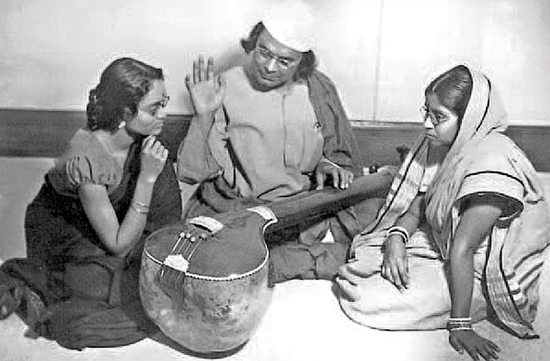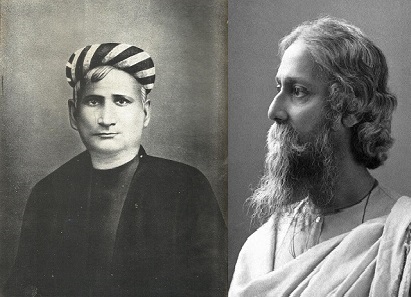|
Pralayollas
Pralayollas ( bn, প্রলয়োল্লাস, ''The Ecstasy of Destruction'' or ''Destructive Euphoria''), also known after its first line as ''Tora sab jayadbhani kar'' is a popular revolutionary Bengali song set to Dadra Tala, whose lyrics and tune were written by national poet Kazi Nazrul Islam Kazi Nazrul Islam ( bn, কাজী নজরুল ইসলাম, ; 24 May 1899 – 29 August 1976) was a Bengali poet, Bengali literature, writer, Bangladeshi music, musician, and is the national poet of Bangladesh. Nazrul is regarded as one ... in 1921. It was the first revolutionary Bengali poem collected in early 1922 in a volume titled Agnibeena: the first anthology of Nazrul's poems. Lyrics References {{reflist External linksKabir Chowdhury's English translation of ''Pralayollas'' Bengali-language poems Poems written by Kazi Nazrul Islam 1921 poems ... [...More Info...] [...Related Items...] OR: [Wikipedia] [Google] [Baidu] |
Kazi Nazrul Islam
Kazi Nazrul Islam ( bn, কাজী নজরুল ইসলাম, ; 24 May 1899 – 29 August 1976) was a Bengali poet, Bengali literature, writer, Bangladeshi music, musician, and is the national poet of Bangladesh. Nazrul is regarded as one of the greatest poets in Bengali literature. Popularly known as Nazrul, he produced a Complete Works of Kazi Nazrul Islam, large body of poetry, music, messages, novels, stories, etc. with themes that included equality, justice, anti-imperialism, humanity, rebellion against oppression and religious devotion. Nazrul's activism for political and social justice as well as writing a poem titled as "Bidrohī", meaning "the rebel" in Bengali, earned him the title of "Bidrohī Kôbi" (''Rebel Poet''). His compositions form the avant-garde music genre of Nazrul Geeti, Nazrul Gīti (''Music of Nazrul''). Born into a Bengali Muslim Qadi#IndoPak Region, Kazi family hailing from Bardhaman district, Burdwan district in Bengal Presidency (now in West Be ... [...More Info...] [...Related Items...] OR: [Wikipedia] [Google] [Baidu] |
Dadra
Dadra is associated with the Hindustani classical music of the Indian subcontinent. Dadra tala This is a Hindustani classical '' tala'' (rhythmic cycle), consisting of six beats in two equal divisions of three. The most commonly accepted theka or basic pattern for this tala is ''dha dhi na, dha tu na''. There is a higher emphasis laid on the first swar in comparison the following two, that is, ''dha'' - higher emphasis following ''dhi'' ''na'' and again a higher emphasis on ''dha'' following ''tu'' ''na''. Theka of Dadra Tala मात्रा भाग : 3-3. धा धिं ना - धा तीं ना It has a characteristic pattern of bols (theka). This can also be shown using the following figure Dadra (genre) In this context ''dadra'' is a light classical vocal form in Hindustani classical music, mostly performed in Agra and in Bundelkhand region. It was originally accompanied by dadra tala (from where the term for the genre was borrowed), but later dadra ... [...More Info...] [...Related Items...] OR: [Wikipedia] [Google] [Baidu] |
Tala (music)
A tala ( IAST ''tāla'') literally means a 'clap, tapping one's hand on one's arm, a musical measure'. It is the term used in Indian classical music similar to musical meter, that is any rhythmic beat or strike that measures musical time. The measure is typically established by hand clapping, waving, touching fingers on thigh or the other hand, verbally, striking of small cymbals, or a percussion instrument in the Indian subcontinental traditions. Along with ''raga'' which forms the fabric of a melodic structure, the ''tala'' forms the life cycle and thereby constitutes one of the two foundational elements of Indian music. ''Tala'' is an ancient music concept traceable to Vedic era texts of Hinduism, such as the '' Samaveda'' and methods for singing the Vedic hymns. The music traditions of the North and South India, particularly the ''raga'' and ''tala'' systems, were not considered as distinct till about the 16th century. There on, during the tumultuous period of Islamic rul ... [...More Info...] [...Related Items...] OR: [Wikipedia] [Google] [Baidu] |
Bangla Academy
The Bangla Academy ( bn, বাংলা একাডেমি, ) is an autonomous institution funded by the Bangladesh government to foster the Bengali language, literature and culture, to develop and implement national language policy and to do original research in the Bengali language. Established in 1955, it is located in Burdwan House in Ramna, Dhaka, within the grounds of the University of Dhaka and Suhrawardy Udyan. The Bangla Academy hosts the annual Ekushey Book Fair. History The importance of establishing an organisation for Bengali language was first emphasised by the linguist Muhammad Shahidullah. Later, following the Language movement, on 27 April 1952, the All Party National Language Committee decided to demand establishment of an organisation for the promotion of Bengali language. During the 1954 parliamentary elections, the United Front's 21-point manifesto stated that, "The prime minister from the United Front will dedicate the Bardhaman House for establishin ... [...More Info...] [...Related Items...] OR: [Wikipedia] [Google] [Baidu] |
Dhaka
Dhaka ( or ; bn, ঢাকা, Ḍhākā, ), formerly known as Dacca, is the capital and largest city of Bangladesh, as well as the world's largest Bengali-speaking city. It is the eighth largest and sixth most densely populated city in the world with a population of 8.9 million residents as of 2011, and a population of over 21.7 million residents in the Greater Dhaka Area. According to a Demographia survey, Dhaka has the most densely populated built-up urban area in the world, and is popularly described as such in the news media. Dhaka is one of the major cities of South Asia and a major global Muslim-majority city. Dhaka ranks 39th in the world and 3rd in South Asia in terms of urban GDP. As part of the Bengal delta, the city is bounded by the Buriganga River, Turag River, Dhaleshwari River and Shitalakshya River. The area of Dhaka has been inhabited since the first millennium. An early modern city developed from the 17th century as a provincial capital and ... [...More Info...] [...Related Items...] OR: [Wikipedia] [Google] [Baidu] |
Bengali Poetry
Bengali poetry is a rich tradition of poetry in the Bengali language and has many different forms. Originating in the Bengal region of South Asia, the history of Bengali poetry underwent three successive stages of development: poetry of the early age (like '' Charyapad''), the Medieval period and the age of modern poetry. All ages have seen different forms of poetry and poetical tradition. It reached the pinnacle during the Bengali Renaissance period although it has a rich tradition and has grown independent of the movement. Major Bengali Poets throughout the ages are Chandidas, Alaol, Ramprasad Sen, Michael Madhusudan Dutt, Nabinchandra Sen, Rabindranath Tagore, Dwijendralal Ray, Satyendranath Dutta, Kazi Nazrul Islam, Jibanananda Das, Jasimuddin, Sukanta Battacharya, Al Mahmud. Introduction Poetry in the colloquial dialect of Bengal first originated from Prakrit, and based upon local socio-cultural traditions. It was antagonistic towards Vedic rituals and laws as opposed ... [...More Info...] [...Related Items...] OR: [Wikipedia] [Google] [Baidu] |
Bengali Alphabet
The Bengali script or Bangla alphabet ( bn, বাংলা বর্ণমালা, ''Bangla bôrṇômala'') is the alphabet used to write the Bengali language based on the Bengali-Assamese script, and has historically been used to write Sanskrit within Bengal. It is one of the most widely adopted writing systems in the world (used by over 265 million people). From a classificatory point of view, the Bengali writing system is an abugida, i.e. its vowel graphemes are mainly realised not as independent letters, but as diacritics modifying the vowel inherent in the base letter they are added to. The Bengali writing system is written from left to right and uses a single letter case, which makes it a unicameral script, as opposed to a bicameral one like the Latin script. It is recognisable, as are some other Brahmic scripts, by a distinctive horizontal line known as a '' mātrā'' () running along the tops of the letters that links them together. The Bengali writing sys ... [...More Info...] [...Related Items...] OR: [Wikipedia] [Google] [Baidu] |
Bengali-language Poems
Bengali ( ), generally known by its endonym Bangla (, ), is an Indo-Aryan language native to the Bengal region of South Asia. It is the official, national, and most widely spoken language of Bangladesh and the second most widely spoken of the 22 scheduled languages of India. With approximately 300 million native speakers and another 37 million as second language speakers, Bengali is the fifth most-spoken native language and the seventh most spoken language by total number of speakers in the world. Bengali is the fifth most spoken Indo-European language. Bengali is the official and national language of Bangladesh, with 98% of Bangladeshis using Bengali as their first language. Within India, Bengali is the official language of the states of West Bengal, Tripura and the Barak Valley region of the state of Assam. It is also a second official language of the Indian state of Jharkhand since September 2011. It is the most widely spoken language in the Andaman and Nicobar Island ... [...More Info...] [...Related Items...] OR: [Wikipedia] [Google] [Baidu] |
Poems Written By Kazi Nazrul Islam
Poetry (derived from the Greek ''poiesis'', "making"), also called verse, is a form of literature that uses aesthetic and often rhythmic qualities of language − such as phonaesthetics, sound symbolism, and metre − to evoke meanings in addition to, or in place of, a prosaic ostensible meaning. A poem is a literary composition, written by a poet, using this principle. Poetry has a long and varied history, evolving differentially across the globe. It dates back at least to prehistoric times with hunting poetry in Africa and to panegyric and elegiac court poetry of the empires of the Nile, Niger, and Volta River valleys. Some of the earliest written poetry in Africa occurs among the Pyramid Texts written during the 25th century BCE. The earliest surviving Western Asian epic poetry, the ''Epic of Gilgamesh'', was written in Sumerian. Early poems in the Eurasian continent evolved from folk songs such as the Chinese ''Shijing'', as well as religious hymns (the Sanskrit ''R ... [...More Info...] [...Related Items...] OR: [Wikipedia] [Google] [Baidu] |

.jpg)



.jpg)